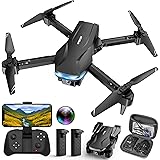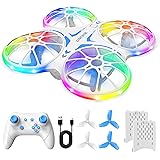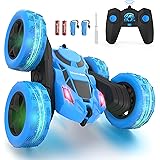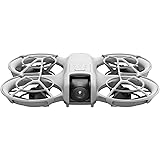In the realm of unmanned aerial vehicles, significant advancements have been observed over the past decade. It is estimated that the global drone market has expanded dramatically since 2014, reflecting a growing interest in both commercial and recreational applications. The accompanying video, titled “Tri Copter 2014 FPV,” provides a fascinating glimpse into an earlier period of this rapid evolution, showcasing a type of multirotor aircraft that captivated hobbyists.
This article aims to provide a comprehensive understanding of what is being depicted in the video: the **Tri Copter** and **FPV** (First Person View) flying. The unique characteristics of tri copters will be explored, alongside the immersive experience that FPV technology offers. Furthermore, the context of 2014 is crucial, as it represents a pivotal time when DIY drone building and FPV flying were truly coming into their own.
Understanding the Tri Copter Phenomenon
A tri copter is a type of multirotor drone distinguished by its three rotors. Unlike the more common quadcopter, which utilizes four motors, the tri copter employs a Y-shaped frame with a single motor at each of its three arms. This design presents both advantages and unique engineering challenges that are quite interesting.
The primary distinction of a tri copter, beyond its fewer motors, lies in its yaw control mechanism. With only three motors, a direct counter-rotating prop setup, as seen in quadcopters, is not possible for yaw. Instead, the rear motor mount is typically designed to pivot or tilt, often controlled by a servo motor. This tilting action allows the thrust vector of the rear propeller to be directed slightly left or right, thereby inducing a yawing motion.
Advantages of tri copters can include a potentially simpler power distribution system, due to having one fewer motor and Electronic Speed Controller (ESC). They might also offer a unique flight feel, preferred by some pilots. However, the added mechanical complexity of the yaw servo mechanism is often cited as a disadvantage, potentially introducing an additional point of failure or requiring more maintenance. The balance of a tri copter in flight is carefully managed by the flight controller, adjusting motor speeds and the servo angle to maintain stability.
Exploring First-Person View (FPV) Flight
The term **FPV**, or First Person View, refers to the experience of piloting an unmanned aerial vehicle as if one were sitting inside it. This immersive experience is achieved by transmitting live video footage from a camera mounted on the drone to a screen or goggles worn by the pilot. For many drone enthusiasts, FPV transforms drone flying from an observational activity into an interactive one.
The basic setup for FPV flight involves several key components. First, an FPV camera is required, which captures the live video feed from the drone’s perspective. This camera is typically small and lightweight, designed for minimal latency. Second, a video transmitter (VTX) is used to send this video signal wirelessly from the drone. Third, a video receiver (VRX) on the ground picks up the signal. Finally, this signal is displayed to the pilot either on dedicated FPV goggles, which provide a deeply immersive experience, or on a monitor. The combination of these elements allows for precise control and a thrilling sense of flight.
FPV technology has revolutionized how drones are flown and used. It enables high-precision maneuvers, making it essential for drone racing and freestyle aerobatics. Furthermore, it significantly enhances the capabilities for aerial photography and videography, allowing operators to frame shots with greater accuracy. The ability to see exactly what the drone sees greatly expands the possibilities for exploration and creative content creation.
Tri Copters in 2014: A Historical Perspective
The “2014” in the video title holds significant context for the drone hobby. This period was a golden age for DIY drone building, as commercially available ready-to-fly (RTF) FPV drones were far less common than they are today. Hobbyists were often required to source individual components and assemble their aircraft from scratch. This process fostered a deep understanding of drone mechanics and electronics among enthusiasts.
In 2014, the choice of flight controllers was also evolving rapidly. Popular options included the MultiWii-based boards and, notably, the Naze32. These controllers, while powerful for their time, often demanded a hands-on approach to configuration and tuning. Pilots were frequently involved in flashing firmware and adjusting PID (Proportional-Integral-Derivative) loop settings to achieve optimal flight characteristics for their custom-built **Tri Copter** or quadcopter. The community aspect of sharing build logs and tuning tips was very strong.
Component availability was different, with a greater emphasis on hobby-grade parts typically found in RC planes and helicopters. Brushless motors and electronic speed controllers were becoming more efficient and reliable. Battery technology, primarily LiPo (Lithium Polymer) batteries, was advancing, offering better power-to-weight ratios and longer flight times. The FPV experience itself was largely analog, with standard definition video transmission being the norm, leading to the characteristic “static” and “fuzziness” seen in older FPV footage. This era of **FPV** flying was characterized by ingenuity and a strong DIY spirit, laying the groundwork for the sophisticated drone technology we see today.
Building Your Own Tri Copter: Essential Components
For those inspired by the video and considering constructing their own **Tri Copter**, understanding the core components is essential. Each part plays a critical role in the aircraft’s functionality and flight performance. Careful selection is required for a successful build.
A strong and lightweight frame is fundamental, typically an open Y-shape design specifically for three motors. The frame supports all other components and withstands flight forces. Three brushless motors are mounted on the arms, providing the thrust for lift and movement. Each motor requires an Electronic Speed Controller (ESC) to convert the flight controller’s signals into motor speed commands. These ESCs determine how powerfully and precisely the motors operate.
The flight controller acts as the brain of the tri copter. It processes sensor data (gyroscopes, accelerometers) and pilot inputs to stabilize the aircraft and execute commands. A Power Distribution Board (PDB) distributes power from the main battery to the ESCs, flight controller, and FPV system. For **FPV** flight, a camera, a video transmitter (VTX), and an antenna are critical for sending the live video feed. Finally, a radio control system, consisting of a transmitter (held by the pilot) and a receiver (on the drone), allows for wireless control of the tri copter’s movements. This comprehensive set of parts is assembled with precision to create a functional FPV platform.
Tips for Tri Copter Enthusiasts
Embarking on the journey of tri copter flying, especially FPV, can be incredibly rewarding. Several practical tips can enhance the experience and ensure safety. Starting with a pre-built kit can be beneficial for beginners, offering a more streamlined entry into the hobby by reducing the complexity of component selection. However, building from scratch provides invaluable learning about electronics and mechanics.
Safety should always be the foremost consideration. Propellers, especially those spinning at high RPMs, can cause serious injury. Always remove propellers when working on the tri copter and handle batteries with care to prevent shorts or fires. Understanding local drone regulations and airspace restrictions is also crucial for responsible flying. Many countries have specific rules regarding FPV flight and maximum altitudes. Adherence to these guidelines ensures a safer environment for everyone.
Learning to fly FPV effectively often starts with practice. Drone simulators are an excellent tool for familiarizing oneself with FPV controls in a risk-free environment. Practicing line-of-sight (LOS) flying before moving to FPV can also build fundamental piloting skills. Regular maintenance, including checking motor bearings, propeller integrity, and wiring connections, helps prevent in-flight failures. Troubleshooting common issues, such as motor desyncs or video signal loss, becomes easier with experience. The joy of piloting a **Tri Copter** in **FPV** is deeply enhanced by preparation and continuous learning.











